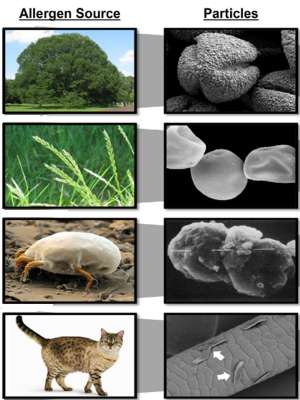Part of a series of articles for National Chemistry Week 2023 on
Unveiling the Surprising Healing Power of Chemistry
Chemical-Mediated Allergen Immunotherapy
Chemical-mediated allergen immunotherapy represents a fascinating intersection between chemistry and allergy treatment. This method, also known as allergen-specific immunotherapy (AIT), employs chemistry to prepare and standardize allergen extracts, offering an unexpected yet highly effective approach to managing allergies.
The chemistry of allergen immunotherapy begins with the precise preparation of allergen extracts. These extracts are composed of proteins or glycoproteins derived from allergenic sources such as pollen, dust mites, pet dander, or insect venom. Chemists play a crucial role in the extraction, purification, and standardization of these allergen extracts, ensuring their quality and safety for therapeutic use.
Allergen extracts used in immunotherapy are designed to contain specific allergenic proteins responsible for triggering allergic reactions. These proteins are isolated and purified to eliminate non-essential components that may cause adverse reactions. The chemistry behind this process aims to strike a delicate balance between retaining the allergenicity of the extracts while minimizing the risk of side effects.
The therapeutic chemistry of allergen immunotherapy involves a systematic approach to desensitizing the immune system. Allergen extracts are administered to patients in gradually increasing doses over a prescribed period. This process, known as dose escalation, aims to reprogram the immune system’s response to allergens, ultimately reducing allergic symptoms.
The chemistry behind allergen immunotherapy extends to the immune system itself. By exposing the immune system to controlled amounts of allergens, this therapy stimulates the production of regulatory T cells and the development of allergen-specific IgG antibodies. These immune responses counteract the harmful effects of allergen-specific IgE antibodies, which are responsible for allergic reactions.
The unexpected healing power of allergen immunotherapy lies in its ability to modify the chemistry of the immune response. Over time, as patients continue with the treatment, their immune systems become less reactive to allergens, resulting in reduced allergy symptoms. This therapy is particularly effective for individuals with allergic rhinitis, allergic asthma, and insect venom allergies.
Allergen immunotherapy offers a long-lasting solution to allergies, with effects that can persist even after treatment is discontinued. This is due to the therapy’s ability to induce immunological tolerance, an unexpected and beneficial outcome of the treatment’s chemistry.
In conclusion, chemical-mediated allergen immunotherapy is a prime example of how chemistry contributes to unexpected yet highly effective medical treatments. By harnessing the chemistry of allergen extracts and immune responses, this therapy offers a promising approach to managing allergies and improving the quality of life for individuals with allergic conditions. Ongoing research in this field continues to refine the chemistry behind allergen immunotherapy, making it a valuable tool in the arsenal against allergies.





